Understanding the Speed of Bed Bugs: A Detailed Exploration
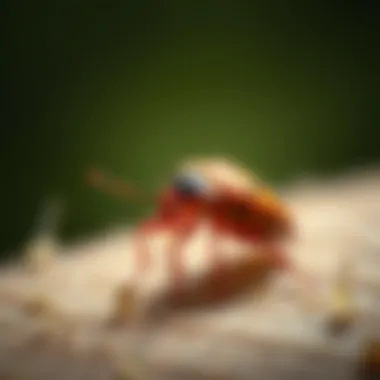

Intro
Bed bugs, those pesky little critters, have long been the bane of many a traveler’s existence. Far from just mere nuisances, their ability to scurry about with surprising speed has implications for both pest control and overall public health awareness. Surprisingly, a bed bug can move at a pace that many might not associate with such a relatively small creature. To dive deep into understanding this aspect—how fast they can go and the factors that affect their movement—is crucial not only for understanding their habits but also for developing effective strategies for managing these pests.
This exploration will shine a light on the anatomy of bed bugs, their behavioral traits in relation to speed, and how they respond to environmental conditions or threats.
Research Overview
Summary of Key Findings
Bed bugs can move at a rate of approximately 3 to 4 feet per minute in optimal conditions. However, even under duress, they can dash to safety in the blink of an eye. Their speed varies significantly based on factors such as temperature, humidity, and the presence of potential threats.
- Anatomy & Physiology:
- Environmental Factors:
- Behavioral Traits:
- Bed bugs possess long, segmented legs that allow for agile movement. Their bodies are flattened, which aids in hiding in narrow spaces.
- Temperature plays a major role; increased warmth can boost metabolic rates, thus enhancing speed.
- Humidity affects their ability to navigate and can impact their thirst-level, which in turn affects mobility.
- When sensing danger, bed bugs have been observed to change their patterns of movement quickly. In unfamiliar environments, they exhibit cautious behavior, whereas in familiar surroundings, they tend to move more freely.
"Understanding how bed bugs maneuver through their environment is a crucial part of effective pest management strategies."
Significance of Research
This research is particularly significant considering the rising instances of bed bug infestations, especially in urban areas where travel and lodging often intersect. Through understanding their speed and movement patterns, pest control professionals can devise more effective strategies for detection and eradication. Additionally, for individuals living in affected areas, this knowledge equips them with the insights necessary to take preemptive measures against these pests.
Methodology
Research Design
To thoroughly investigate the speed and movement of bed bugs, a mixed-methods approach was adopted. This method combined observational studies with controlled experiments to assess how various factors influenced their movement.
Data Collection Methods
- Field Observations:
- Laboratory Experiments:
- Environmental Assessments:
- Researchers set up traps and monitored bed bug behavior in both infested and controlled environments to gather data on their speed.
- Utilizing temperature-controlled chambers allowed for precise measurements of movement speed under varied conditions.
- Analyzing the humidity and light exposure in the area studied provided context for bed bug behavior.
Through a robust methodology, these findings lay the groundwork for a deeper understanding of bed bug locomotion and its implications for pest management.
Preface to Bed Bugs
Understanding the nature of bed bugs is paramount in tackling infestations effectively. Though they may appear innocuous, these tiny pests are notorious for their swift movements and resilience. Knowledge of their behavior and biology can equip individuals and professionals alike with the right tools to manage and prevent bed bug problems. The importance of this exploration stretches from the understanding of risk factors that promote their presence to recognizing the signs of an infestation.
Historical Context
Bed bugs, scientifically known as Cimex lectularius, have plagued humans for centuries. Their historical context reveals a long battle between humans and these parasitic insects. Evidence suggests that bed bugs have been around since ancient civilizations. They were found in Egyptian tombs and in the homes of Greeks and Romans, often associated with images of suffering due to their bites. These pests were largely kept at bay with the urbanization and improved hygiene practices of the 20th century. However, the recent resurgence is attributed to increased international travel, lack of awareness, and resistance to common pesticides. This backdrop provides a significant lens through which to understand their speed and movement today.
Biology and Lifecycle
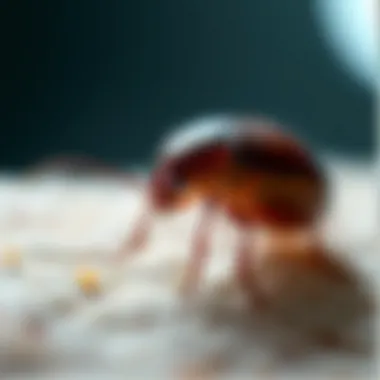
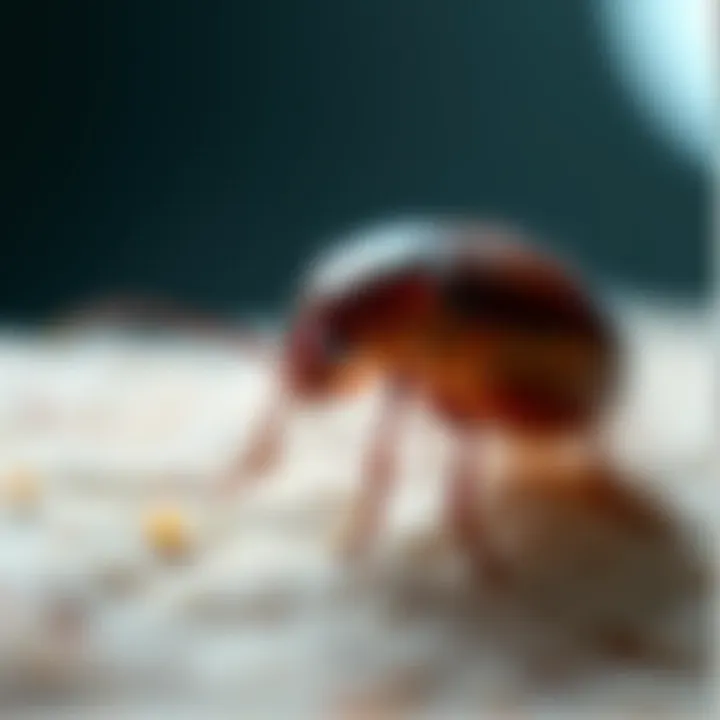
Bed bugs undergo a unique lifecycle consisting of several stages: egg, nymph, and adult. Each of these stages plays a crucial role in their development and ultimately impacts their speed. After eggs hatch, nymphs emerge, which are smaller and lighter, allowing for nimble movements to seek out food sources. Adults, being larger, have their own ways of maneuvering through beds, cracks, and crevices, showcasing their adaptability.
Text Box Example:
- Egg Stage: 1-2 weeks to hatch
- Nymph Stage: 5-7 molts before maturity
- Adult Stage: Can live up to a year without a meal
The combination of their biology and environmental adaptability grants bed bugs a natural speed advantage, as these insects are often driven by necessity—specifically their need to feed and reproduce.
"Understanding their lifecycle sheds light on their ability to thrive even in adverse environments, making them formidable adversaries in pest control."
The interplay between their life stages and speed informs how we can manage them—timely interventions can disrupt their lifecycle before they establish robust populations.
Ultimately, gaining a comprehensive grasp of bed bugs from historical, biological, and ecological perspectives allows for improved strategies in detection and management, which will be explored further in the following sections.
Anatomy of Bed Bugs
Understanding the anatomy of bed bugs is key to grasping how these tiny creatures navigate their environments and, ultimately, their speed. The intricate design of their bodies not only facilitates movement but also plays a role in their survival against threats. Recognizing the structural makeup allows pest control professionals and researchers to develop effective strategies for managing these resilient pests.
Physical Characteristics
Bed bugs are small, reddish-brown insects, measuring about 4 to 5 millimeters in length. Their bodies are flat and oval-shaped, which aids in hiding in tight crevices and under furniture. The exoskeleton is made of chitin, a tough material that provides protection from physical damage. This tough exterior, combined with their coloring, makes it easier for them to blend into their surroundings.
The coloration can change noticeably after feeding; they become more elongated and turn a deeper shade of red due to the blood they consume from their unsuspecting hosts. This adaptation has allowed bed bugs to thrive in various environments, making them particularly difficult to eradicate.
Key Features of Bed Bugs’ Physical Characteristics:
- Flat bodies: Enables them to hide in thin spaces.
- Color change: After feeding, they become darker and more swollen.
- Size: Small dimensions facilitate rapid movement and quick escapes.
The sensory organs on their bodies, including their antennae, provide them with vital information about their surroundings, enhancing their ability to locate hosts and navigate effectively. Their mouthparts are adapted for piercing skin and extracting blood, illustrating their specialized feeding habits that further fuel their energy and movement. Each of these characteristics contributes not only to their physical speed but also to their overall survival as a species.
Leg Structure and Functionality
The leg structure of bed bugs is intricately designed for movement. They have six legs, each one equipped with sharp claws which improve grip on various surfaces. This is particularly advantageous when they move quickly to escape predators or when foraging for hosts. Their legs are long in proportion to their bodies, allowing for agile maneuvers despite the insects' small size.
Breakdown of Bed Bug Leg Functionality:
- Speed: Their legs are adapted for short bursts of speed, enabling them to traverse quickly across surfaces.
- Grip: The claws allow for better traction, which is especially useful when navigating uneven terrain like fabrics or wooden floors.
- Agility: Rapid movement in different directions is crucial when detecting threats or pursuing blood meals.
The mechanics of their legs demonstrate a fascinating blend of evolution and purpose, highlighting how even the smallest creatures have adapted intricately to their lifestyles. Observing how these legs propel bed bugs forward provides insight into their movement strategies, revealing why they can quickly become a nuisance in homes and businesses alike.
Bed bugs can move surprisingly fast, making their detection and management a significant challenge.
By comprehending the leg structure and physical traits of bed bugs, researchers and pest control experts can better understand their movement dynamics. This knowledge forms the foundation for strategizing more effective control mechanisms, ensuring that infestations can be managed effectively.
For you to delve deeper into bed bug anatomy and their fascinating adaptations, consider visiting resources like Wikipedia on Bed Bugs and Britannica on Bed Bugs.
Movement Capabilities
Understanding the movement capabilities of bed bugs is essential, as it reveals insights not only into their behavior but also into the challenges these tiny creatures pose for pest management. The movement of bed bugs can be broken down into distinct elements, such as short-range speed, long-distance movement, and comparisons with other pests. Grasping these facets aids researchers and professionals alike in devising effective control strategies and ultimately reducing infestations in both residential and commercial settings.
Short-range Speed
Bed bugs are often characterized by their quick bursts of speed when they sense a nearby threat or when searching for a meal. On a flat surface, these insects can scurry at a remarkable rate, which is crucial for their survival. On average, they can move approximately 3 to 4 feet per minute. If we put that into perspective, a bed bug could cover a good distance across a mattress or bed frame in a matter of moments. They utilize specialized leg structures to propel themselves efficiently, allowing them to navigate through crevices and hidden nooks searching for hosts.
Some studies indicate that external factors like temperature can significantly affect their short-range speed. For instance, in warmer environments, bed bugs appear to move more swiftly, likely due to increased metabolic rates. Consequently, understanding these nuances can assist pest control professionals when devising strategies for various settings, emphasizing the importance of temperature regulation as a potential deterrent.

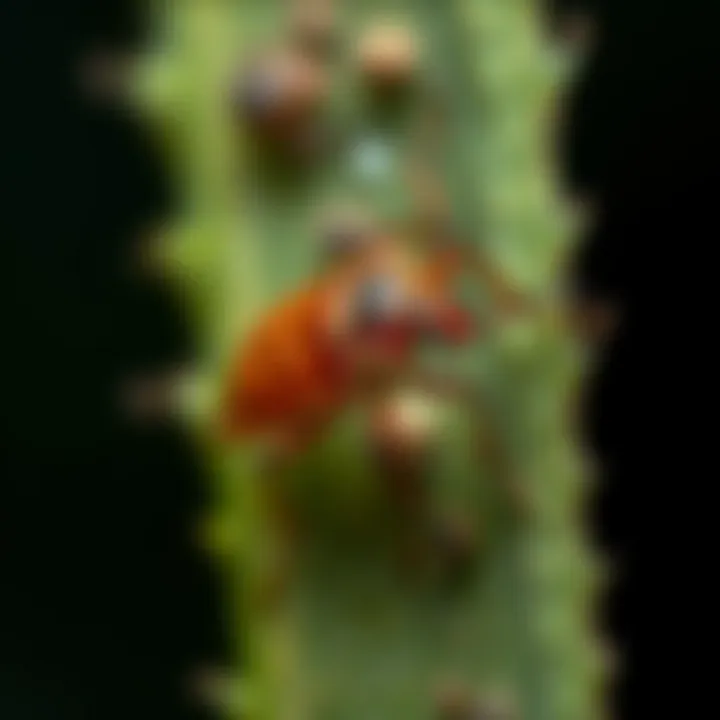
Long-distance Movement
While short-range speed is vital, bed bugs are also capable of long-distance movement, albeit at a slower rate. This movement typically occurs when they are seeking new locations to infest or escape unfavorable conditions. They can utilize objects within their environment, hitching rides on luggage or furniture, which amplifies their reach far beyond their usual habitats. This adaptability is one reason why residential infestations can escalate quickly across different areas.
Their long-distance movement can happen through various means, often influenced by human behavior. The ability to remain dormant and then emerge to travel when conditions are favorable makes them particularly successful. Understanding how and when they travel long distances can mark the difference between an easy fix and a drawn-out battle against these pests.
"Bed bugs can venture far beyond their immediate environment, making control efforts more challenging."
Comparison with Other Pests
When stacked up against other pests, bed bugs show unique capabilities. For instance, while cockroaches can dart quickly and cover longer distances fairly efficiently, bed bugs operate differently in their approach. Their movement strategies are more calculated and focused on stealth. They rely on nocturnal habits to avoid detection from predators, unlike other pests that might engage in rapid escapes.
Certain pests like fleas may outpace bed bugs when it comes to sheer speed and agility, especially when jumping. However, bed bugs bring their strengths to the table with their habit of hiding in small, obscure places, where detection becomes difficult. The success of bed bugs largely lies in their ability to remain inconspicuous and blend seamlessly into their environment.
Factors Influencing Speed
The speed at which bed bugs can travel is not solely reliant on their physical make-up. Rather, their locomotion is influenced by an array of external factors. Understanding these factors is pivotal for both scholars and pest management professionals as it can facilitate more effective strategies in controlling these pests. There’s a significant interplay between environmental conditions, prey presence, and the stresses bed bugs experience in their habitats. A thorough examination of these elements helps to explain not just how fast bed bugs can move, but why they move as they do in the first place.
Temperature Effects
Temperature is a potent determinant of bed bug behavior. The tiny creatures thrive in warm environments, which can significantly boost their metabolic rate.
- Optimal Range: Bed bugs flourish between temperatures of 21°C to 27°C (69°F to 81°F). In this comfort zone, they become hyperactive, often accelerating their speed to explore new environments.
- Cold Responses: Conversely, when the temperature drops below 13°C (55°F), their mobility diminishes sharply, and their life processes slow down. Bed bugs may even become dormant in colder settings, waiting for warmer temperatures to resume their activities.
- Heat Adaptation: In extreme heat, while they may initially speed up, prolonged exposure can lead to desiccation. Bed bugs will seek cooler microhabitats, effectively altering their mobility in search of the right temperatures.
This relationship with temperature involves a crucial understanding that controlling room temperatures may aid pest management efforts. Keeping areas cooler or warmer than their optimal range can keep bed bugs at bay effectively.
Prey Availability and Habitat
Bed bug speed is also heavily influenced by the availability of their primary sustenance: blood. Their foraging tactics are designed to maximize the likelihood of blood meals, which inherently affects their movement.
- Close Proximity to Hosts: The presence of humans or animals influences their speed. If a host is nearby, bed bugs may exhibit faster movement, seemingly darting between hiding spots and surfaces, as they prepare for a feeding. Speed becomes a survival mechanism in this context.
- Poor Habitat Quality: In environments with little to offer, speed may decrease significantly as bed bugs conserve energy. In poorly lit, cluttered, or less trafficked areas, their movement might slow down while they search for a better environment.
- Population Density: Higher densities of bed bugs can lead to increased competition for hosts. This can create a frenzied environment where bed bugs need to move faster to secure food. Their speed can thus be a reflection of their habitat's dynamics and resources.
Stress and Predation Response
Moreover, like any living creature, bed bugs will alter their speed in response to threats. Their behavioral adjustments to stress directly correlate to their ability to evade predators or human efforts to control populations.
- Startle Reflex: When disturbed, bed bugs may exhibit an immediate burst of speed as a reaction to a perceived threat. This quick response can often lead to them darting into crevices or attempting to escape the danger.
- Chronic Stress: Extended exposure to stressful environments, such as overcrowding or frequent disturbances, may lead to altered behaviors. In some cases, they might develop slower, more careful movement patterns to avoid detection.
- Environmental Pressure: Chemical pesticides can also induce rapid movement. When exposed to such chemicals, bed bugs may instinctively attempt to flee, leading to sporadic and fast movements. This behavior not only affects speed but also complicates pest management efforts as they adapt to avoid eradication strategies.
"Control measures should consider environmental impacts to enhance the effectiveness of strategies against bed bugs."
For additional reading on the behaviors of bed bugs, reference the resources available on Wikipedia and Britannica.
Behavioral Traits Related to Speed
Understanding the behavioral traits of bed bugs reveals much more than mere curiosity about their swift movements. These traits are crucial for their survival, as they dictate how effectively these pests navigate their environments. By examining the nuances of their behaviors, we can gain insights into their speed, as well as how these behaviors contribute to their adaptability and resilience in various settings, including human habitats.
Foraging Behavior
Foraging is perhaps the most essential activity for bed bugs, primarily tied to their feeding habits. Bed bugs are nocturnal, preferring to venture out under the cover of darkness. This strategy allows them to avoid detection while searching for a meal, typically human blood. The speed at which they forage can lead to significant differences in infestation rates.
During their foraging quests, bed bugs rely on several sensory cues, primarily carbon dioxide and body heat, to locate their human hosts. A study by the University of Kentucky observed that, in ideal conditions, bed bugs could cover distances of up to 5 feet in just a few minutes—a speed that may seem modest compared to other pests, yet is remarkably efficient for their size. This rapid movement allows them to exploit their feeding periods effectively.
- Adaptability: Behavioral speed in foraging directly correlates to their ability to adapt to human living environments. The faster a bed bug can locate its host, the more successful it will be in thriving amidst its competition.
- Survival Rate: An efficient foraging strategy enhances their survival, especially during seasonal or climatic changes that affect prey availability.
Territorial Movement
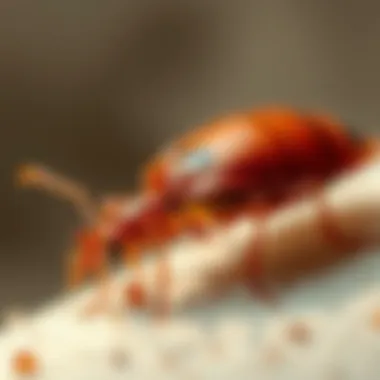
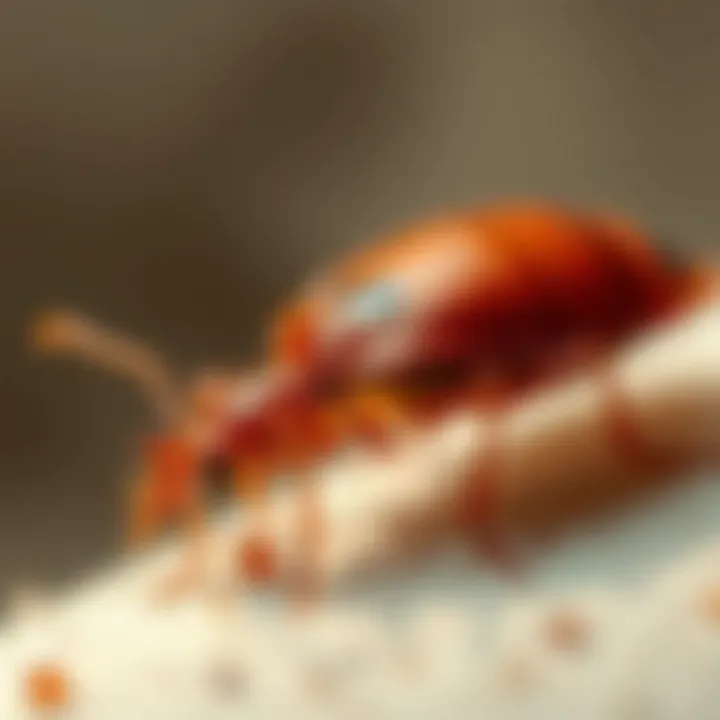
Territorial movement among bed bugs illustrates another layer to their speed dynamics. While often considered pests, bed bugs possess territorial instincts that can dictate their mobility. When establishing a territory, whether it be in a mattress seam or a crack in the wall, bed bugs mark their domains with pheromones and create a competitive space against other bed bugs.
When it comes to moving between territories, their speed plays a significant role. With their capacity to traverse short distances quickly, bed bugs can establish new territories in response to overcrowding or in unfavorable conditions. Their ability to move swiftly between territories contributes to the challenges faced during pest control and eradication efforts.
- Space Adjustment: A bed bug might shift territories to avoid predator threats or competition for food resources, making their agility a critical survival asset.
- Population Spread: Fast movement aids in dispersing populations, which is particularly evident in multi-story homes or hotels, where bed bugs can quickly infest new rooms.
Mate Finding Strategies
Reproduction strategies among bed bugs are as intricate as their movement. Mating behavior is deeply intertwined with their speed—male bed bugs must navigate their environment efficiently to locate females for mating. They often employ a method known as traumatic insemination, where the male penetrates the female’s abdomen to deposit sperm, leading to evolutionary adaptations in their speed.
In terms of speed, male bed bugs have been observed using rapid bursts of movement when searching for a mate. Not only do they rely on pheromones released by females to guide them, but their agility allows them to swiftly approach potential mates, thus increasing their chances for reproduction.
- Mate Persistence: Faster movement enhances the likelihood of reproductive success, particularly in crowded habitats where numerous competitors exist.
- Adaptation to Environment: As environmental conditions change, such as the presence of new hosts or predators, their capacity to quickly find a mate becomes pivotal.
In summary, bed bugs exhibit a range of behaviors directly related to their speed, from foraging to territorial movements and mating strategies. Each behavior showcases a unique adaptation to survive and thrive in a challenging environment. Understanding these traits can offer invaluable information for those tackling infestations and attempting to curtail their populations.
Detection and Monitoring of Bed Bug Movement
Understanding how bed bugs move and how to monitor their movements is crucial for effective pest management. These pesky insects are elusive and can quickly establish their presence without being noticed. Knowledge of their movement patterns allows for timely interventions, which can drastically reduce infestations and minimize the associated woes that come with them. It’s like knowing the enemy's strategy before the battle begins. The ability to detect bed bugs early can mean the difference between a small inconvenience and a full-blown infestation that spoils your peace of mind.
Techniques for Studying Movement Speed
To effectively study how fast bed bugs traverse their environment, several advanced techniques have emerged. High-speed cameras are a prime tool. Researchers can capture bed bug movement in stunning detail, slowing it down to analyze specific behaviors. This method allows scientists to quantify factors like acceleration and direction, giving insight into how these bugs adapt to their surroundings during different conditions.
Moreover, utilizing infrared sensors can provide real-time tracking of movement patterns. Bed bugs, being polyphagous, have varied habits depending on environmental stimuli, and infrared tracking helps researchers observe these changes without disrupting their natural behavior.
Marking techniques, like using fluorescent powders, have also gained popularity. By applying a harmless powder onto bed bugs, it becomes easier to track their paths and interactions over time in a controlled setting. This visual tracking becomes a vivid representation of their behavior and can highlight areas of risk within a home environment.
Some traditional methods still hold value. Sticky traps strategically placed in common hideouts can serve as a low-tech means of monitoring. Traps should be checked regularly to provide quick feedback on bed bug activity. While these will not measure speed directly, they indicate movement trends effectively.
Impact of Movement on Control Methods
The significant correlation between bed bug movement and pest control measures cannot be overstated. Understanding how fast these bugs can move influences the strategies employed to manage them. For instance, a greater understanding of their speed can inform the timing of insecticide applications. If populations are observed to move quickly between treated and untreated areas, it may necessitate a more aggressive response strategy.
Additionally, recognizing patterns in bed bug displacement can guide the placement of traps and barriers. When you know their typical routes, you can target your efforts more efficiently, increasing the likelihood of catching them before they scatter.
- Increased awareness can lead to:
- Faster detection: Early recognition of increased movement can trigger immediate control measures.
- More efficient treatments: Timely treatments can curtail population growth before it escalates.
- Better preventive strategies: Knowing movement patterns allows for fortification of potential pathways.
Ultimately, a detailed understanding of bed bug movement empowers both pest control professionals and homeowners alike. This knowledge not only aids in addressing current infestations but also helps to prevent future encounters. For more insights on the topic, you may explore Wikipedia or refer to resources from CDC, which provide valuable information on effective management strategies.
Epilogue and Future Research Directions
The speed and movement of bed bugs is not just a quirky detail; it is a pivotal element in understanding their behavior and offers insight into effective pest control strategies. In this investigation, we’ve unearthed several essential aspects of bed bug movement, leading us to appreciate how these tiny creatures have developed remarkable adaptations. The implications of their speed are vast, as they directly impact everything from their feeding habits to how they evade common extermination methods. As such, detailing their movement patterns opens the door to further understanding their biology and ecology, which is critical for tackling infestations.
Summary of Findings
Through various observations, it becomes clear that bed bugs have a speed range that, albeit not breathtaking, is sufficient for their survival and reproduction. The findings from this article pinpoint how:
- Bed bugs can cover short distances swiftly, especially when attracted to carbon dioxide or warmth, leading them toward hosts.
- Environmental factors, like temperature, play a significant role in their speed; warmer conditions often correlate with heightened activity levels.
- Behaviorally, bed bugs utilize speed differently depending on their specific goals—be it feeding, escaping threats, or mating.
These insights serve as a foundation, ultimately enhancing our comprehension of these pests, which is crucial for developing more effective control measures.
Suggestions for Further Studies
As we look to future research avenues, several key aspects warrant further exploration:
- Longitudinal Studies on Movement Dynamics: Long-term studies could foster a deeper understanding of how bed bugs adapt their movement patterns over generations in response to environmental changes or pest control strategies.
- Impact of Human Activity: Investigating how human actions, such as increased travel or changing habitable zones, affect the patterns of bed bug infestations and movement could yield fruitful results.
- Effect of Chemical Controls on Speed: Observing bed bug speed in relation to different pesticides would provide valuable data on their resilience and might help design more effective extermination tactics.
- Comparison to Other Pests: A broader comparative study including other common household pests could illuminate unique movement mechanisms and potential overlapping strategies for pest management.
In summary, delving deeper into the world of bed bugs, particularly their speed and movement dynamics, stands to benefit both academic researchers and pest management professionals. By shifting perspectives and keeping our inquiry alive, we not only become better equipped to deal with these resilient insects but also contribute to the larger conversation on urban pest management.



